 Peace negotiations were already being conducted at Lausanne but progress was very slow,
Peace negotiations were already being conducted at Lausanne but progress was very slow,  and two important actions were fought before a conclusion was reached.
and two important actions were fought before a conclusion was reached.
On Sept. 2 Gen. Caneva
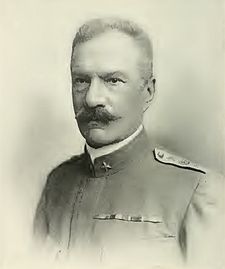 was recalled to Italy, and the command of the troops in Libya was divided, Gen. Ragni
was recalled to Italy, and the command of the troops in Libya was divided, Gen. Ragni  becoming governor and commander-in-chief in Tripoli, and Gen. Briccola, who had hitherto been subordinate to Gen. Caneva, old Roman ruins libia
becoming governor and commander-in-chief in Tripoli, and Gen. Briccola, who had hitherto been subordinate to Gen. Caneva, old Roman ruins libia being given independent authority in Cyrenaica. Gen. Briccola's first action was to improve the position at Derna,
being given independent authority in Cyrenaica. Gen. Briccola's first action was to improve the position at Derna,  which had been a daily target for a few Turkish shells for more than eight weeks. The Derna
which had been a daily target for a few Turkish shells for more than eight weeks. The Derna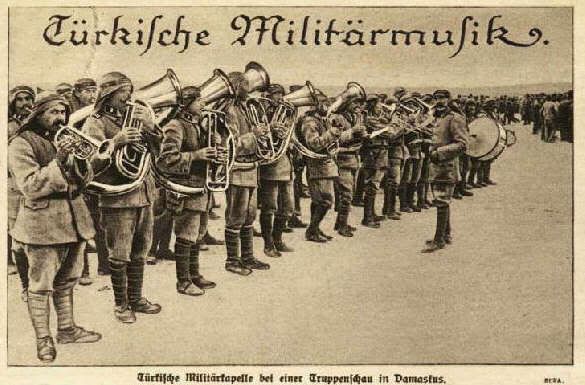 garrison had been weakened
garrison had been weakened Fulco Ruffo di Calabria one of the fiorst pilots ever to fly war missions. Below his plane in the great war.
Fulco Ruffo di Calabria one of the fiorst pilots ever to fly war missions. Below his plane in the great war.in order to provide troops for the Rhodes and Misurata expeditions, but early in Sept. detachments
 were sent from Bengazi, Horns, Zuara and Rhodes, and on the 14th three columns moved out from the lines, and occupied new positions on the high ground to the south.
were sent from Bengazi, Horns, Zuara and Rhodes, and on the 14th three columns moved out from the lines, and occupied new positions on the high ground to the south.  Three days later the Turks and Arabs attacked in force, but though they fought with the most reckless bravery they met . Below Brtitains original turk
Three days later the Turks and Arabs attacked in force, but though they fought with the most reckless bravery they met . Below Brtitains original turk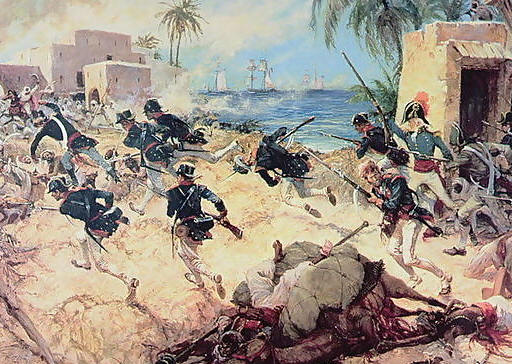 and lost some 1,500 men in killed alone. A week later a further Italian advance, both south and east,
and lost some 1,500 men in killed alone. A week later a further Italian advance, both south and east,  met with little resistance, and a number of unwounded prisoners were taken.
met with little resistance, and a number of unwounded prisoners were taken.CAPitan. D'ANGELO,Who won the Gold Medal at Derna although mortally wounded
Meanwhile one more blow had been struck near Tripoli. Large numbers of Arabs had
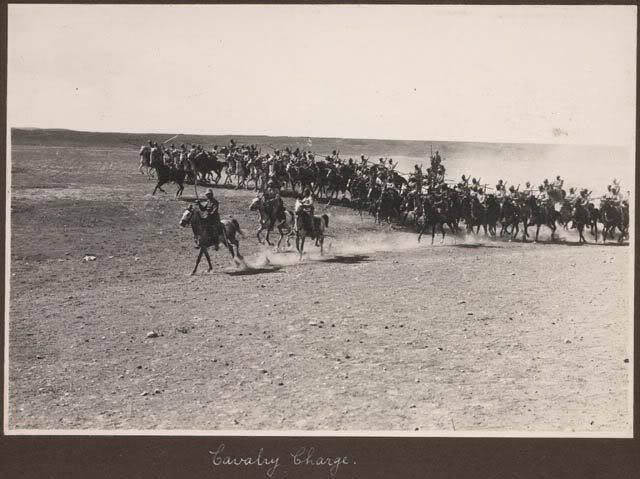 concentrated on the far side of Zanzur,
concentrated on the far side of Zanzur, and at dawn on Sept. 20 the Italians attacked. The battle, known as Sidi Bilal, followed the same course as that of the Zanzur battle on June 8, large numbers of Arabs and Turks coming up from the south, and the result was the same.
and at dawn on Sept. 20 the Italians attacked. The battle, known as Sidi Bilal, followed the same course as that of the Zanzur battle on June 8, large numbers of Arabs and Turks coming up from the south, and the result was the same.
The great Omar Al-Mokhtar, a Libyan school teacher who led the resistance fighting against the Italian occupation of his country. Though his profession was Quranic teaching he was a particularly adept strategist and leader of the Senussi revolt against the Italian occupation of Libya for 20 years (1912-1931). Wounded in battle, he was captured on September 13, 1931, summarily tried, and hung in front of his supporters in the concentration camp at Suluq, just southeast of Benghazi. He was 70 years old.
 The Arabs fought with great determination, and with greater skill than they had shown before, but their bravery was useless.
The Arabs fought with great determination, and with greater skill than they had shown before, but their bravery was useless. 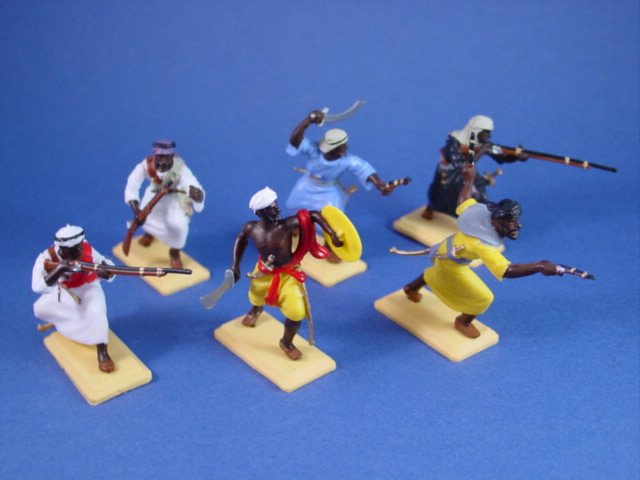 The Turks and Arabs between them lost over 1,500 killed, while the Italian casualty list was nearly 600.
The Turks and Arabs between them lost over 1,500 killed, while the Italian casualty list was nearly 600.
The Arabs of the plains were now convinced that further resistance was useless, and the Italian
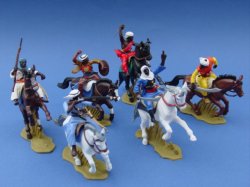 advance in preparation would probably have met with little opposition. But peace was imminent. The Treaty of Ouchy was signed on Oct. 15.
advance in preparation would probably have met with little opposition. But peace was imminent. The Treaty of Ouchy was signed on Oct. 15.
The conduct of the Tripoli campaign, as the narrative of events alone would indicate, was
 prejudiced, first, by the failure of the Italian Government to judge the situation correctly
prejudiced, first, by the failure of the Italian Government to judge the situation correctly , and, secondly, by the limitations which were laid upon the military authorities.
, and, secondly, by the limitations which were laid upon the military authorities.  When it became evident that the original plan of campaign, which provided more for
When it became evident that the original plan of campaign, which provided more for  demonstration than for action, had failed,
demonstration than for action, had failed, the Government were slow to
the Government were slow to admit the necessity for a change of policy. It was not possible at once to launch a desert
admit the necessity for a change of policy. It was not possible at once to launch a desert  expedition, and the difficulties of an advance to the Jebel, through country largely waterless,
expedition, and the difficulties of an advance to the Jebel, through country largely waterless, may be said to have justified the adoption of a less ambitious plan.
may be said to have justified the adoption of a less ambitious plan.  What is difficult to understand is the practical veto upon action of any kind, which immobilized large forces in Tripoli from Dec. till April, and delayed the carrying-out of the policy which eventually put an end to hostilities,
What is difficult to understand is the practical veto upon action of any kind, which immobilized large forces in Tripoli from Dec. till April, and delayed the carrying-out of the policy which eventually put an end to hostilities, the policy of extending the area of operations and striking a blow whenever the chance offered.
the policy of extending the area of operations and striking a blow whenever the chance offered. It was after long hesitation that the bulk of the native tribesmen joined those who had thrown in their lot with the Turk in the early days of the war.
It was after long hesitation that the bulk of the native tribesmen joined those who had thrown in their lot with the Turk in the early days of the war.  The Arab forces in the Tripolitan plains quadrupled between Dec. and March, the numbers increasing from
The Arab forces in the Tripolitan plains quadrupled between Dec. and March, the numbers increasing from 5,000 or 6,000 to over 20,000, and the cause of the increase was Italian inaction during that period.
5,000 or 6,000 to over 20,000, and the cause of the increase was Italian inaction during that period.  The operations of the summer changed the views of the Arabs, but Italian prestige was not wholly restored by the later successes.
The operations of the summer changed the views of the Arabs, but Italian prestige was not wholly restored by the later successes.  The policy of the Government bore heavily upon the army, which was the subject of much unfair criticism
The policy of the Government bore heavily upon the army, which was the subject of much unfair criticism , and increased the difficulties of those who undertook the administration of the country after the peace.
, and increased the difficulties of those who undertook the administration of the country after the peace.  The troubles which were to come with the outbreak of the World War may be traced in part at least
The troubles which were to come with the outbreak of the World War may be traced in part at least  to the hesitations and uncertainties of the six months following the first landing. (At this time,
to the hesitations and uncertainties of the six months following the first landing. (At this time, and for some weeks previously,
and for some weeks previously,
the garrison of Turks which had evacuated
Tripoli,
 aided by only a few hundred ill-trained(murdered Libyan irregulars)
aided by only a few hundred ill-trained(murdered Libyan irregulars)
and undisciplined Arabs,
 had literally laid siege
had literally laid siegeto the town to such an extent that even drink-
ing water had to be brought in ships from Italy.
Italian reinforcements, too, were constantly
arriving,
 as we knew by the uniforms and caps
as we knew by the uniforms and capstaken by the Arabs.(the Italians started Concentration camps in Puglia and these Libyans suffered terrible deprivations there)
 The Italian soldiers in the
The Italian soldiers in thetrenches were apparently spiritless, taking no

interest in a war which had turned out so
differently from their expectations ; and when
 a sortie was finally made, the advance guards,
a sortie was finally made, the advance guards,at least, were entirely composed of new men.
Those who had lain for many days in the
trenches were broken in nerve and weary in body.
 The Senussi movement was an Islamic political movement originally begun in Makkah in 1837 but predominant in Libya and the Sudan.
The Senussi movement was an Islamic political movement originally begun in Makkah in 1837 but predominant in Libya and the Sudan. for resistance against European occupation of North Africa, particularly against the French in the Sahara, and then the Italians in Libya.
for resistance against European occupation of North Africa, particularly against the French in the Sahara, and then the Italians in Libya. Omar Al Mukhtar was raised in this tradition, and educated at the local mosque before studying for 8 years at the Senussi university at Al-Jaghbub. He participated along with other Senussis in the final resistance against the French in Chad from 1899 until the defeat of Chadian leader Rabih az-Zubayr in 1900. He resumed his profession of Quranic teacher, until he formed the eastern Senussi resistance against the Italian invasion of 1911. Sheik Idris, later King Idris, a grandson of the founder of the Senussi movement in Makkah headed the resistance in Cyrenaica before his exile to Egypt in 1922, from whence he continued to wage guerilla warfare against the Italians, with Omar Al Mukhtar as his delegate, and the de factoleader.
Omar Al Mukhtar was raised in this tradition, and educated at the local mosque before studying for 8 years at the Senussi university at Al-Jaghbub. He participated along with other Senussis in the final resistance against the French in Chad from 1899 until the defeat of Chadian leader Rabih az-Zubayr in 1900. He resumed his profession of Quranic teacher, until he formed the eastern Senussi resistance against the Italian invasion of 1911. Sheik Idris, later King Idris, a grandson of the founder of the Senussi movement in Makkah headed the resistance in Cyrenaica before his exile to Egypt in 1922, from whence he continued to wage guerilla warfare against the Italians, with Omar Al Mukhtar as his delegate, and the de factoleader.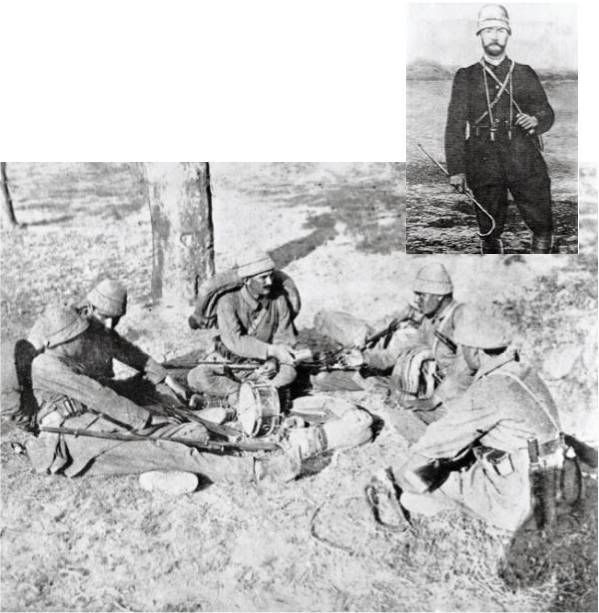
Italy, compared to other European powers was consolidated as a country late (1871) and arrived late to the collection of colonies, and the European partition of Africa.
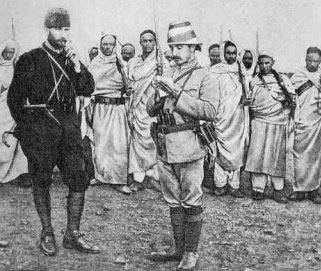 It did however envisage an Italian colonial empire from Tunisia and Libya south and east to the Eastern Horn of Africa: Eritrea, Somalia, and Ethiopia (Abbyssinia).
It did however envisage an Italian colonial empire from Tunisia and Libya south and east to the Eastern Horn of Africa: Eritrea, Somalia, and Ethiopia (Abbyssinia).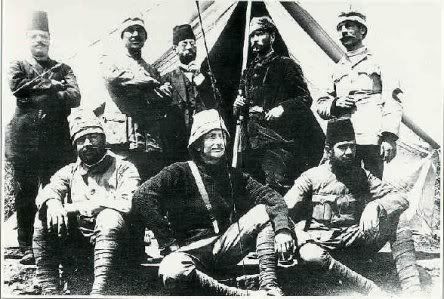 Beginning with Italian emigration especially from Sicily and Calabria for politico-economic reasons, through
Beginning with Italian emigration especially from Sicily and Calabria for politico-economic reasons, through  the nationalism of the turn of the 20th century, and then with Mussolini's renewed fervor for colonization
the nationalism of the turn of the 20th century, and then with Mussolini's renewed fervor for colonization  from the dominance of his fascist party in 1922, Italy was involved in colonization and colonial wars against the Ottoman Empire,
from the dominance of his fascist party in 1922, Italy was involved in colonization and colonial wars against the Ottoman Empire, and the other European powers (Britain and France) to create "Greater Italy".
and the other European powers (Britain and France) to create "Greater Italy".
Omar Al Mukhtar, known for his exceptional abilities as a strategist and architect of guerilla
 warfare in the desert, became the leader of the Senussi uprising, particularly against the renewed
warfare in the desert, became the leader of the Senussi uprising, particularly against the renewed  military efforts of fascist Italy, and of Idris' exile.
military efforts of fascist Italy, and of Idris' exile. 

No comments:
Post a Comment